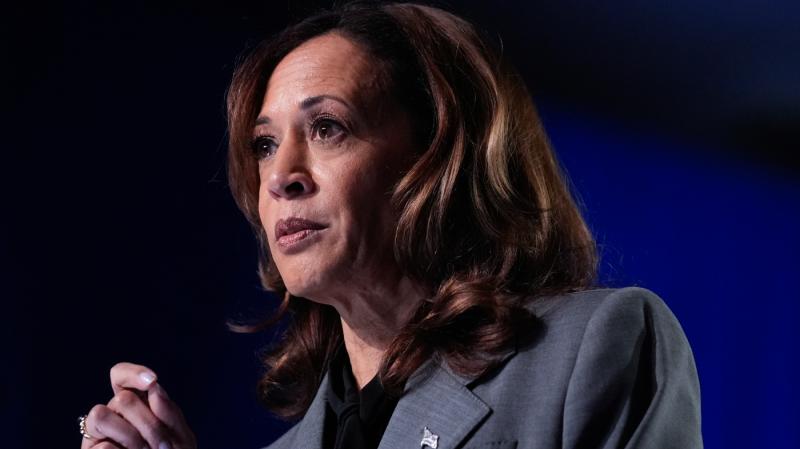Kamala Harris's homeownership plan could become the next student debt crisis
Category: News & Politics
Via: texan1211 • 5 months ago • 5 commentsBy: Christopher Calton (The Hill)



by Christopher Calton, opinion contributor - 09/24/24 1:30 PM ET
by Christopher Calton, opinion contributor - 09/24/24 1:30 PM ET
Democratic presidential nominee Vice President Kamala Harris speaks during a campaign event on Friday, Sept. 20, 2024, in Atlanta. (AP Photo/Brynn Anderson)
The rising cost of homeownership has made housing policy a central component of Vice President Kamala Harris's platform. Among her proposals is to provide $25,000 in down payment assistance for first-time homebuyers who have paid their rent on time for two years.
Although the proposal might sound enticing to new homebuyers, its unintended consequences will be most harmful to its intended beneficiaries.
Details are sketchy, but one possibility is for the assistance to come in the form of a federal loan, not unlike the student loans issued by the Department of Education. Although some of these loans are interest-free, most are not. When student borrowers make payments on their loans, the revenue is used to issue new student loans, making the policy ostensibly self-financing.
Federal tuition assistance, therefore, offers some warnings about Harris's downpayment-assistance plan.
Like down payment assistance, federal student aid is a demand-side subsidy, meaning that it enhances the purchasing power of people paying for a specific product — namely, a college education. But an increase in demand means higher prices, which is what the program has done to higher ed.
In 1993, the Clinton administration implemented the Direct Student Loan program to make college more affordable. By 2019, the average tuition at a four-year school had nearly doubled, from $9,874 to $18,251, after adjusting for inflation. Student debt grew at an even faster pace, from an average of roughly $9,000 per student in 1993 to $30,500 in 2019, again adjusted for inflation.
When the Federal Reserve first began tracking total student debt in the first quarter of 2006, Americans cumulatively owed $481 billion. Today, total student debt has reached an astonishing $1.74 trillion, with roughly 7 million borrowers in default.
Federal tuition assistance created an endless cycle of larger loans and rising costs. Access to federal money fuels higher tuition costs, which makes it necessary to take out larger loans, which further fuels higher tuition costs, and so on. After decades of college tuition rising at a pace far in excess of inflation, the days of being able to work a summer job to pay tuition are long gone.
Even people who once would have paid their tuition out of pocket now find it necessary to borrow, reinforcing the apparent necessity of federal aid in helping young people attend college. Sure, the skyrocketing cost of tuition is no longer a barrier to entry for prospective students, but ironically, the enormous debt that young adults are saddled with has proven to be a significant barrier to homeownership.
Subsidizing homebuyers will produce the same outcomes as the student aid fiasco, or perhaps worse.
If two buyers are bidding on the same house, and they each have an additional $25,000 to spend, then the price of the home will rise. Yet it would be wrong to assume that the price will increase by $25,000. More accurately, down payment assistance will cause the price to increase not just by $25,000, but more likely by a multiple of that amount.
There is no precise formula for how much Harris's program will affect home prices in real life — this will depend in part on individual circumstances, the particulars of Harris's policy and how banks respond to it. But homebuyers who qualify for Harris's plan are likely to see their purchasing power swell by some amount greater than $25,000, and all buyers will face prices that are correspondingly higher as a direct result.
The larger loan may nudge beneficiaries of down payment assistance to purchase more expensive homes than they can afford long-term. Even prudent borrowers will face settling for less than they could otherwise afford or devoting more of their budget to housing in order to bid competitively for homes. These effects will increase the risk of default, creating the same debacle in housing markets that we have seen in student loans.
The biggest losers will be those in the market for a new home who do not qualify for down payment assistance. They will face a pricier housing market with no federal assistance to supplement their buying power.
Federal down payment assistance promises to recreate the student-debt spiral in the mortgage and housing markets, and it would lead to a similar default crisis. Those are predictable outcomes of Harris's contradictory plan to make housing more affordable, on the one hand, and ensure ever-increasing home values on the other.
Harris can't have it both ways. Her downpayment assistance plan will only exacerbate housing unaffordability.
Christopher Calton, Ph.D., is a research fellow in housing and homelessness with the Independent Institute in Oakland, Calif.
Copyright 2024 Nexstar Media Inc. All rights reserved. This material may not be published, broadcast, rewritten, or redistributed.

 Article is LOCKED by author/seeder
Article is LOCKED by author/seeder




Second order thinking is not a concept many democrats tend to do well with. Foreseeable consequences just don’t exist in that worldview.
I think she should give all retirees 50,000 because they are helping to make room in the workforce for illegals.